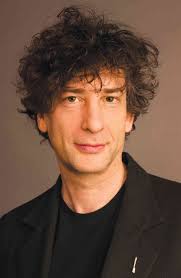 My copy of Half World came from the North Vancouver City Library. It is a hardcover edition with 233 pages (including Acknowledgements). This is pretty close to an ideal length for a book, in my opinion. This particular copy bears a ‘Staff Pick’ sticker. We don’t have many YA fiction fans on staff, and I want to know who read it and talk to them about it; that’s a project for after my Leave of Absence ends (next week, sniff sniff).
My copy of Half World came from the North Vancouver City Library. It is a hardcover edition with 233 pages (including Acknowledgements). This is pretty close to an ideal length for a book, in my opinion. This particular copy bears a ‘Staff Pick’ sticker. We don’t have many YA fiction fans on staff, and I want to know who read it and talk to them about it; that’s a project for after my Leave of Absence ends (next week, sniff sniff).
The front cover was illustrated by Jillian Tamaki, who also illustrated This One Summer. I find her illustrations much more appealing when done in warm colours as they are here. I love the Icarus imagery she has drawn with the two girls clearly flying close to the sun. The crows beneath the girls contrast beautifully with the warm red orange sky, as does the olive Paddington bear coat worn by the girl on the left. She appears to have a lime green rat on her shoulder; I want to know more about that.
The title of the book appears in gold in a font that resembles calligraphy. Both the author’s name and the characters look Japanese.
 Neil Gaiman blurbed it, calling it “Wonderfully odd, and quite unforgettable.” I trust Neil. (Who doesn’t?) I am not familiar with the three authors who wrote blurbs for the back cover: Nalo Hopkinson, Ellen Klages, and Charles de Lint. Actually, I’ve heard of Charles de Lint, and often thought his books look good, but have never read one. Should I?
Neil Gaiman blurbed it, calling it “Wonderfully odd, and quite unforgettable.” I trust Neil. (Who doesn’t?) I am not familiar with the three authors who wrote blurbs for the back cover: Nalo Hopkinson, Ellen Klages, and Charles de Lint. Actually, I’ve heard of Charles de Lint, and often thought his books look good, but have never read one. Should I?
When I open the book, there are blank beige endpages. I’m faintly disappointed that there isn’t a map. There are four books listed on the ‘Also by’ page; I’ve never heard of any of them.
Goto has dedicated the book to her mother with a quote about “soft power” and the word “subarashii.” I wonder if this dedication is going to play into the themes of the novel, and the strengths the protagonist has.
The prologue is written in a difference font than the rest of the novel. I don’t know the name of the font, but it has the feel of cursive writing. There are bits of text in the main chapters that use this font as well.
 The chapters each have the same symbol under the chapter title. The symbol is a dark square with notched corners. Inside the square is a circle with a three-headed yin yang symbol: one is white, one is grey, one is black.
The chapters each have the same symbol under the chapter title. The symbol is a dark square with notched corners. Inside the square is a circle with a three-headed yin yang symbol: one is white, one is grey, one is black.
Image Sources (from top to bottom)
Half World [Book Cover]. (2009). Retrieved from http://img1.fantasticfiction.co.uk/images/n61/n308527.jpg
Butler, K. (n.d.). Neil Gaiman is also the author of Coraline, American Gods, Anansi Boys,Stardust and M Is for Magic. He was born in Hampshire, England, and now lives near Minneapolis [Photograph]. Retrieved from http://media.npr.org/assets/img/2013/05/16/gaimanauthorphoto_custom-8135a6d7a098351be71dc44947f6cde854345a7b-s6-c85.jpg
Tamaki, J. (2009). Half World [Illustration]. Retrieved from http://books.google.ca/books?id=xmQE3BaGrScC&pg=PT26&source=gbs_toc_r&cad=4#v=onepage&q&f=false





